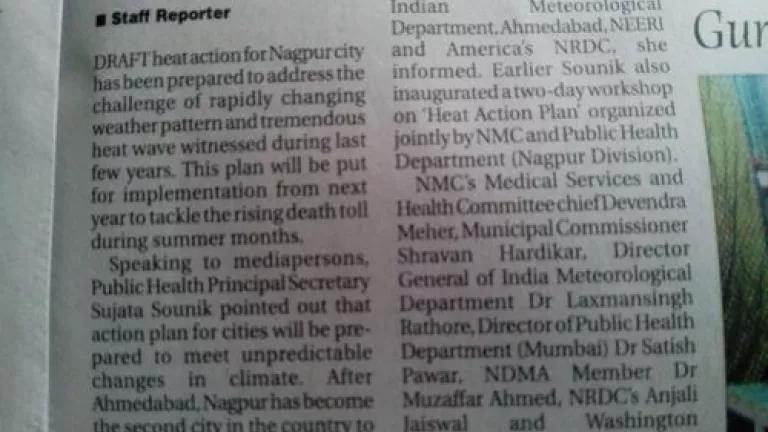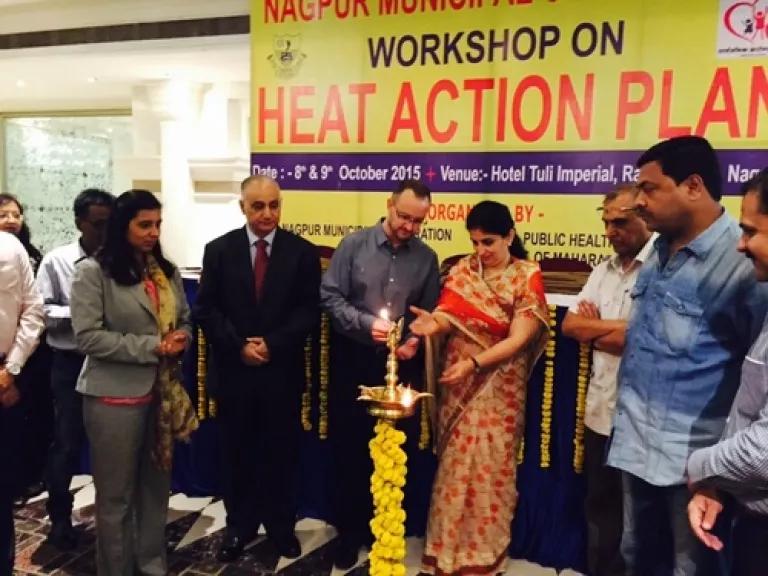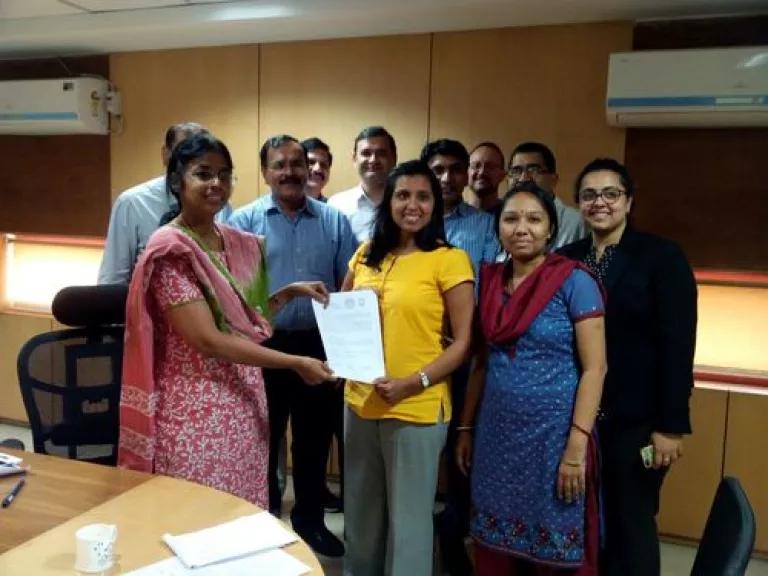Scaling Heat Resilience Plans as Temperatures Rise in Indian Cities of Ahmedabad and Nagpur

Guest Blog by Amee Raval, NRDC India Climate Intern
Some Persian Gulf cities may be so hot that they are unlivable by 2100 as global temperatures continue to rise due to greenhouse gas emissions, according to an alarming new study. Climate change is already threatening health and livelihoods around the world, with 2015 likely to be the hottest year ever recorded, according to recent tracking of worldwide temperatures. Earlier this year, extreme temperatures in South Asia resulted in one of the deadliest heat waves ever, contributing to several thousands of deaths in India and Pakistan. These alarming patterns point to an ever increasing need for cities to take innovative approaches to building resilience to extreme heat, especially in light of climate action discussions leading to COP21 negotiations in Paris at the end of this month.
In collaboration with NRDC and other international partners, key cities in India are taking local action to protect vulnerable groups from the impacts of extreme heat. These activities were initiated by a pilot Heat Action Plan (HAP) in Ahmedabad in 2013, the first comprehensive early warning system and preparedness plan for extreme heat events in South Asia. Now, the Ahmedabad experience is being used as a model for developing Heat Action Plans to save lives in cities across India. Leading this scaling effort are six cities located in the heart of India, within the state of Maharashtra (home to megacity Mumbai), to fight against the devastating health impacts faced by the region.
Government officials from six neighboring cities in Maharashtra (Nagpur, Chandrapur, Gondia, Akola, Nanded and Jalgaon) convened in Nagpur to evaluate their own Heat Action Plans under the leadership of Principal Secretary of Maharashtra Department of Public Health Sujata Saunik and Nagpur Municipal Corporation Commissioner Srawan Hardikar, along with Indian Meteorological Department officials Dr. L.S. Rathore and Dr. S.C. Bhan, and international expert and IPCC scientist Dr. Jeremy Hess.
Located in the center of the subcontinent, Nagpur is the third largest city in Maharashtra and the seat of the annual winter session of the Maharashtra state assembly "Vidhan Sabha." Plans are on schedule for a draft release of the region's HAPs before parliament in December, showing strong leadership from the municipal corporations and health departments involved.

From left, NRDC's Anjali Jaiswal, NDMA's Dr. Ahmad, Maharashtra Public Health Secretary Sujata Saunik, Dr. Jeremy Hess and IMD Director Dr. Rathore at the Nagpur Heat Action Plan Workshop (Nagpur, October 2015). © NRDC
The scaling process would not be possible without the critical role of IMD, a key government stakeholder involved both at the central and local level. Their partnership provides cities with guidance on using weather forecasts and determining temperature thresholds to know when heat waves are predicted and declaring heat alerts. IMD's high-level officials active participation at this conference and in the development of heat resilience plans demonstrates strong leadership and enables more effective HAPs. IMD is also planning a roundtable to strengthen and coordinate forecast communication to cities.
Ahmedabad is also demonstrating continued leadership from Ahmedabad Municipal Corporation (AMC) Commissioner D Thara and Mayor Meenakshiben Patel, continuing to strengthen these groundbreaking heat resilience efforts to protect its 7 million residents. AMC renewed its Memorandum of Understanding (MOU) with NRDC and partner, Indian Institute of Public Health, Gandhinagar (IIPH-G) this month, which focuses on strengthening implementation of Ahmedabad's HAP as well as advancing innovative heat health-related research. A traffic police pilot study conducted this past summer, supported by the National Institute of Health (NIH) and the Climate and Development Knowledge Network (CDKN), was successful in providing preliminary insight about the effects of occupational heat exposure at traffic junctions. This study was also instrumental in assessing feasibility for a larger prospective cohort study planned for the 2016 heat season.

Representatives from the AMC, NRDC and IIPH-G, including Commissioner D Thara at left, renew their MOU to strengthen the Ahmedabad Heat Action Plan (Ahmedabad, October 2015). © NRDC
As we head into upcoming Paris climate talks, climate change mitigation efforts are garnering much needed attention. However, the devastating impacts on health and livelihoods that we have seen in Ahmedabad, Nagpur, and other regions in South Asia demonstrate the immediate need for local climate resilience efforts in parallel. As temperatures continue to rise, these heat wave preparedness efforts are critical in protecting vulnerable communities from the increasingly deadly effects of a warming world.
